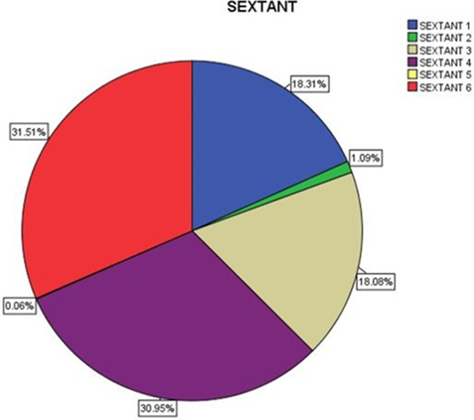Abstract
Depending upon the site of the tooth, accessibility of oral hygiene products like toothbrush, tooth floss etc. different teeth have varying susceptibility to getting infected by cariogenic bacteria. Plaque accumulation, occlusal morphology, oral hygiene practices etc. play an important role in determining the susceptibility of teeth towards caries. A retrospective cross-sectional study was conducted using patient records from the Dental College, Chennai after reviewing and analysing the data of 86000 patients between June 2019 and March 2020. The variables involved were age, gender and site of carious teeth. Data were then exported to the Statistical Package for Social Sciences (SPSS) for Windows (Version 19, 2010) for further analysis. The total sample size was 19014. The sample had a gender distribution of 55.56% males and 44.44% females. Class 1 dental caries was found to be most prevalent in sextant 6 that is the lower right posterior teeth region. Least incidence of class 1 DC was noted in sextant 5, which is the lower anterior teeth. Young adults (18- 35 years) had the highest incidence of class 1 dental caries (p<0.05). Among males and females, respectively, class 1 caries was most prevalent in sextant 6 (p<0.05). Within the limits of the study, it can be concluded that caries experience is highest in mandibular posteriors. There was a slight male predilection in the prevalence of class 1 dental caries. Young adults in the age group, 18-35 years, have the highest incidence of class 1 DC.
Full text article
Authors

This work is licensed under a Creative Commons Attribution-NonCommercial-NoDerivatives 4.0 International License.

